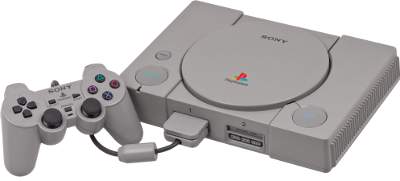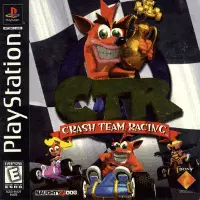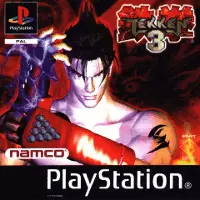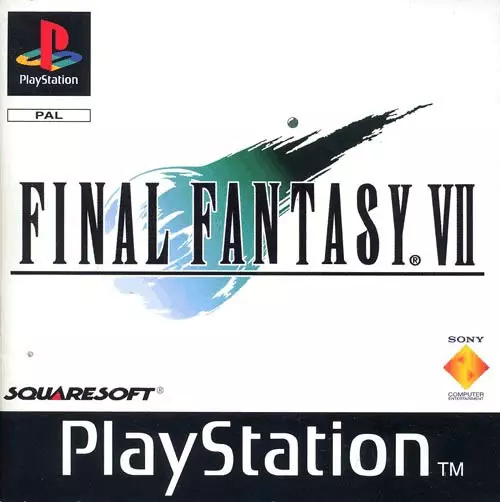Présentation :
The PlayStation is a fifth-generation video game console, produced by Sony Computer Entertainment in the mid-1990s. The original PlayStation was the first machine in the PlayStation series, followed by the Net Yaroze, the PSone (a smaller version and lighter than the original), PocketStation, PlayStation 2, PStwo (a lighter version of PlayStation 2), PSX (Japan only), PlayStation Portable, PlayStation 3 and PS3 slim.
By May 18, 2004, nearly a decade after its launch, Sony announced that it had distributed 100 million video games worldwide and more than 962 million PlayStation games.


Historique :
The first designs of the PlayStation date back to 1986. Nintendo had worked on the floppy support with the Famicom, but problems have occurred. Its rewritable magnetic nature could easily be erased (causing a consequent decrease in durability), and the discs were exposed to the danger of piracy. As a result, when the details of the CDROM / XA (an extension of the CD-ROM format that combines compressed audio formats and visual data, allowing them to access it simultaneously) appeared, Nintendo was interested. The CDROM / XA was developed simultaneously by Sony and Philips. Nintendo has asked Sony to develop an additional CD-ROM module under the name SNES-CD. An agreement was signed, and work began. The choice of Sony by Nintendo was due to one person: Ken Kutaragi, the person who was soon to be called The Father of PlayStation, who sold to Sony Nintendo the Sony SPC-700 processor that allowed a synthesis of sound ADPCM 8 channels in the Super Famicom / Super Nintendo, and the latter demonstrated through this processor impressive audio capabilities for the time.
Sony also planned the development of a console under its own name but compatible with Nintendo, consisting of a system of entertainment allowing to play the Super Nintendo both with the cartridges and also with a new CD format that Sony wanted to create. This would be the format used in SNES-CD discs, allowing Sony to enter the video game market, to the detriment of Nintendo's dominance.
In 1989, the SNES-CD was about to be announced at the CES in June. However, when Nintendo Chairman Hiroshi Yamauchi read the original 1988 contract between Sony and Nintendo, he realized that the agreement passed gave Sony the ownership of all games on the SNES-CD format. Yamauchi was furious; considering the contract totally unacceptable, he secretly canceled all the plans of the association between Sony and Nintendo for the SNES-CD. Indeed, instead of announcing their association on the day of the CES, the director of the American subsidiary of Nintendo Howard Lincoln came on the scene and revealed that they were now in partnership with Philips, and that it was planned that all the joint work between Nintendo and Sony was going to be abandoned. Lincoln and Minoru Arakawa went to Philips headquarters in Europe, without informing Sony, and formed an alliance of a totally different nature: an alliance that would give Nintendo total power over its licenses on Philips machines.
The announcement of the CES was a real shock. Not only was it a huge surprise (Sony had just decided, the previous night, the name of the joint project under the brand Play Station), but this was perceived by many in the Japanese business community as a fatal betrayal: a company Japanese snubbing another Japanese company in favor of a European firm was absolutely unthinkable.
After the collapse of the joint project, Sony thought to stop the search, but finally, the company decided to reuse everything that had been developed jointly with Nintendo to make it a console in itself. This decision motivated Nintendo to sue Sony for breach of contract in the United States Federal Court, and sought a marketing ban on the Play Station, arguing that Nintendo had the rights to the name. The federal judge finally refused the ban. Thus, in October 1991, the first model of the new Sony Play Station was revealed; in theory, about 200 machines of this type were only produced.
By the end of 1992, Sony and Nintendo had agreed that the Sony PlayStation could have specific connectivity for SNES games, but Nintendo wanted to keep the rights to its games to keep the profits from their sales. However, at that time, Sony realized that the technology of the SNES began to show its limits, and that the new generation of consoles was about to see the light of day: work began in early 1993 to renew the concept of Play Station to target the new generation of software and hardware. Sony then had discussions with Commodore to buy the technology of their Amiga CD32, but they did not succeed. In the end, the SNES port was removed, the space between the two words was removed, and the PlayStation was born.
The PlayStation logo was created by Manabu Sakamoto, who also designed the Sony VAIO computers logo.


Spécifications Techniques :
MIPS R3000A architecture chips manufactured by MIPS Technologies compatible (R3051) 32-bit RISC running at 33.8688 MHz
The chip is manufactured by LSI Logic with technologies belonging to Silicon Graphics. The chip contains the Geometry Transformation Engine and the Data Decompression Engine.
Functions :
- Computing power of 30 MIPS
- Bandwidth Bus at 132 Mbit / s
- 4K instruction cache
- 1K cache memory (non-associative, just 1024 bytes of SRAM)
Geometry transformation engine
This engine is included in the main processor. This brings up vector mathematical instructions used for 3D graphics.
Functions :
- computing power of 66 MIPS;
- 360,000 raw polygons per second
- 180,000 textured and illuminated polygons per second.
Sony has officially announced the polygon count to:
- 1.5 million rough polygons per second
- 500,000 textured and illuminated polygons per second.
These figures have been given for use under optimal conditions, and are therefore unrealistic under normal conditions.
Data decompression engine
This engine is integrated in the processor. He is responsible for decompressing the audio and video contents. The device can decode three WX encoded macroblocks of 16 × 16 size, and can rotate a TCD as well as assemble a 16 × 16 macroblock in RGB. External data can be transferred via direct access to memory. It is possible to rewrite a TCD matrix and several additional parameters, however the MDEC internal instruction set has never been documented.
Functions :
- compatibility with MJPEG and H.261 files;
- computing power of 80 MIPS;
- directly connected to the processor bus.
Graphic processor
This chip is separate from the processor and takes care of all 2D graphics, which include 3D polygon transformations.
Functions :
- maximum of 16.7 million colors;
- resolutions of 256 × 224 to 640 × 480 pixels;
- adjustable frame buffer;
- unlimited color consultation tables;
- maximum color depth of 24 bits;
- maximum of 4000 sprites 8 × 8 pixels with scale and individual rotation;
- Simultaneous fund emulation (for scrolling);
- flat shading or Gouraud, and texture-mapping.
- 24 ADPCM channels
- Sampling frequency of 44.1 kHz, in 16 bits, stereo.
- Samples encoded in 4-bit ADPCM (compression ratio of 1/4 equivalent to 2 MB of 16-bit PCM stored in 512 KB RAM)
- Playing CD-Audio tracks
Memory
- Main RAM: 2 MB;
- RAM video: 1 MB;
- ROM: 512 KB (BIOS size)
- RAM sound: 512 KB;
- CD-ROM memory: 32 KB;
- ROM calculation system: 512 KB;
- PlayStation memory cards have an EEPROM with a capacity of 128 KB.
CD-ROM drive
Functions :
- double speed, with a data transfer rate of 300 kb / s (2x);
- XA conforms to Mode 2;
- CD-DA (CD-Digital Audio).









